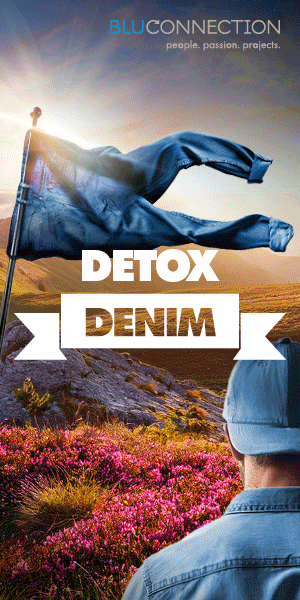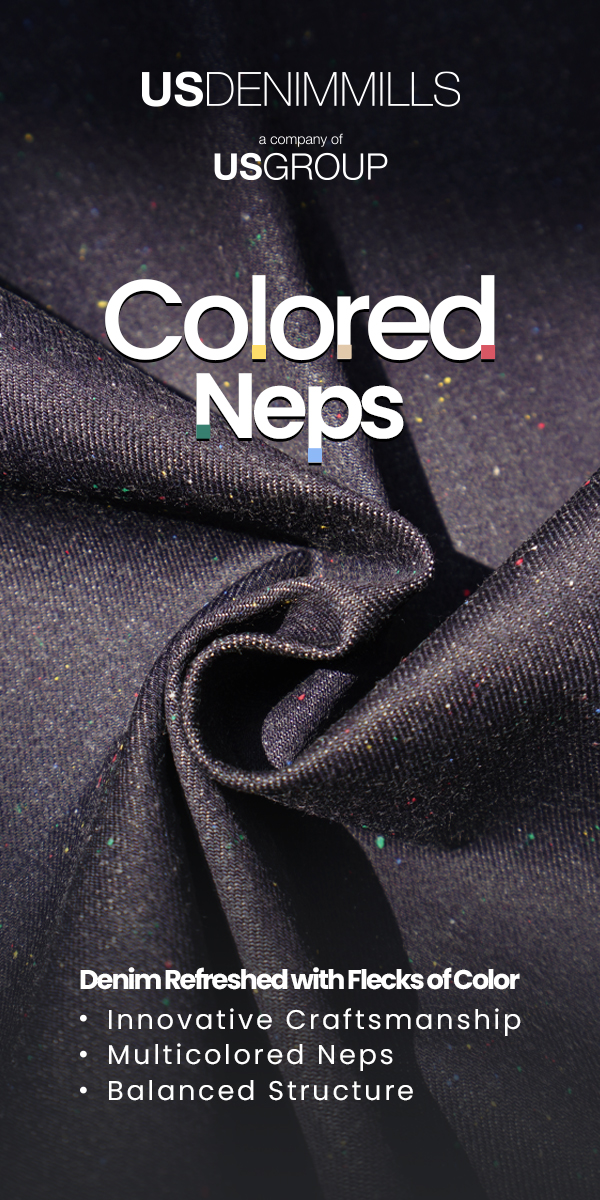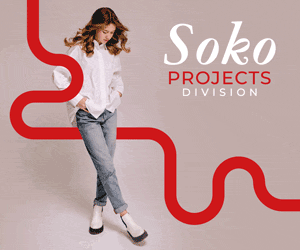From DPRK to Stockholm

Julia Hederus, the designer behind Noko Jeans, the first (and possibly only) Western denim jeans brand to celebrate making its products in North Korea, diplomatically describes dealing denim with an enigma, plus making her own way in the fashion industry - via Thebes.
The now-fabled Noko (as in North Korea) Jeans brand began in 2007, the brainchild of a small group of Swedes: founders Jacob Åström, Tor Rauden Källstigen and Jakob Ohlsson, plus designer (and denim lover) Julia Hederus and photographer Erik Wåhlström. Technically active until 2011, Noko Jeans had a short sales life. Ten years on, though, the brand’s signature black denim (indigo-dyed jeans were considered too American or westernised for the North Koreans, Ms Hederus tells Inside Denim) is coveted by collectors worldwide.
Launched online via the brand’s own website and at Stockholm’s (since closed) PUB department store in December 2009, PUB pulled Noko’s jeans from its shelves within a matter of days, citing potential political controversy. Remarkably, Noko subsequently opened its own Stockholm-based museum to exhibit and sell the jeans later the same month. The museum soon relocated to another part of Stockholm, but finally closed its doors in February 2010.
Noko Jeans’ intention was always to “tell stories” from inside North Korea and “increase [international] transparency, little by little” through making denim jeans in Pyongyang, the nation’s capital, Ms Hederus says. Back in the late noughties, being in Pyongyang felt as though “time had stopped entirely, sometime in the 1950s”, she tells us. The group’s aim was to create a point of contact between the North-East Asian country and the wider world.
Dictating denim
As there was no denim fabric production in North Korea at the time, Ms Hederus says, raw materials were sourced from nearby China as necessary, with the denim then cut and sewn in a Pyongyang factory predominantly engaged in mining and app development activities. Communication with the North Korean factory was “extremely limited”, which made the project difficult to manage, the Swedish designer tells us. It was therefore tricky to “get information straight”, although Ms Hederus describes having had a “good working relationship” with Noko Jeans’ Pyongyang-based stakeholders.
In total, the Noko Jeans team spent 10 days in the North Korean capital during July 2009, reaching Pyongyang via train from Beijing, with a further three weeks in China (during which time they did not visit their Chinese denim producer). Ms Hederus tells Inside Denim the trip left a “deep impression” on her, and while she had felt worried, she describes a “spacious and clean factory, with good machinery”. The workers would have gymnastics each day, outside in the courtyard. Palpably concerned about how “hard [sewing is] for one’s shoulders and back”, Ms Hederus recalls this part of the story with a clear sense of relief: “I thought [the exercise] was great”, she discloses. However, she also acknowledges that the project “took a turn [Noko Jeans] didn’t want” on the factory floor.
During our exchange, the designer was keen to emphasise how, today, she feels that clothes should be made under fair trade regulations and for a living wage. However, she remains positive about the founders’ original, perhaps “naïve”, idea of taking part in an exchange - not only in terms of business, but also of culture.
Pyongyang style
Documenting Noko Jeans’ “transparency” during the Pyongyang-based cut-and-sew process for would-be buyers was a key objective for the Swedish enterprise, but a “slight crisis” ensued when it became apparent that this would be “impossible”, Ms Hederus reveals. With their chosen jeans-making factory already preoccupied with the manufacturing of winter jackets when the Swedish delegation arrived, they “never really got the chance” to witness much of the jeans’ production, as intended. What is more, no further visits to the country were possible, owing to the expense of travel.
Instead, the first – and, as it would turn out, only – batch of 1,100 pairs of Noko-branded unisex denim jeans arrived in Stockholm some months after the brand’s team returned to Europe. Two styles were made: the Kara slim fit (a tighter model, with a regular waist), plus the Oke loose fit (a baggier jean, with a regular waist and a drop crotch). The 100% cotton jeans had been designed to be washed and treated, but this process was never undertaken due to the factory in Pyongyang not having the necessary facilities.
Ms Hederus explains that she did “look a lot” at hemp fibre during her research process, but the nascent brand’s budget could not stretch to accommodate the price of hemp. Moreover, “convinced that stretch was a bad idea”, for reasons relating to the quality and long-lasting durability of the finished jeans, the designer considers her “old-fashioned” approach to material selection appropriate to Noko Jeans’ principal concept: to be responsible for what they saw as the first Western denim jeans produced in North Korea.
A labour of love
“Making garments is hard work and that should be acknowledged and appreciated,” Ms Hederus tells Inside Denim. Following a “long in-between phase”, which included freelance work and assisting other labels with various aspects of the design process in Paris, Shanghai and Kolding, Denmark, as well as in Stockholm, she concentrated her Central Saint Martins-honed menswear design talent on starting up her own (slow) men’s fashion brand, Units of Thebe, in 2017. “Products have a lot of power in society,” she says, so with Units of Thebe her aim is now to make fewer products, of the highest quality possible.
Today, Ms Hederus says she is against fast fashion and overproduction and believes that her current premium streetwear offering, which is inspired by classic military uniforms and vintage pieces, is “fair trade”, seeing as how every garment is handmade to order in Sweden. She hopes all clothing and accessories will be made under fair labour conditions in the future. Her legacy as a designer, she tells us, will be “equality, creativity and resourcefulness”. She continues: “I don’t think that we need more products today, but we will always need creativity, beauty and clothes to cover ourselves.
“The art of making clothes is old – and it is an ancient profession that I am proud to be in. To make things is important to people and I think that this will only grow in importance in the future. I don’t want to see society saturated, in terms of production, energy, extraction, workforce and financial resources, but an equal and balanced place to be.”
The designer’s experiences in Pyongyang, North Korea left a lasting impression and encouraged her to actively pursue slow, bespoke and fair production, inspired by classic vintage styles.
Image Credit: Units of Thebe













